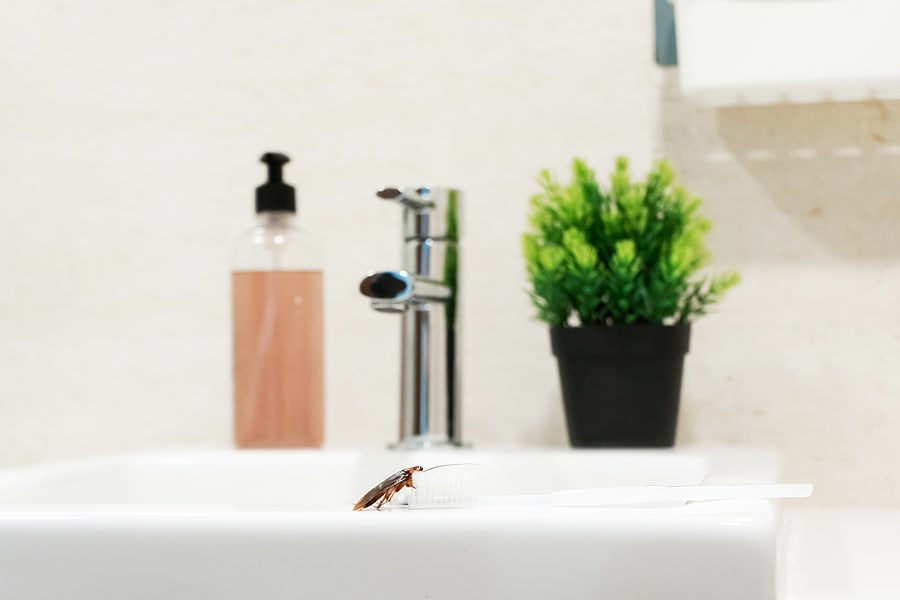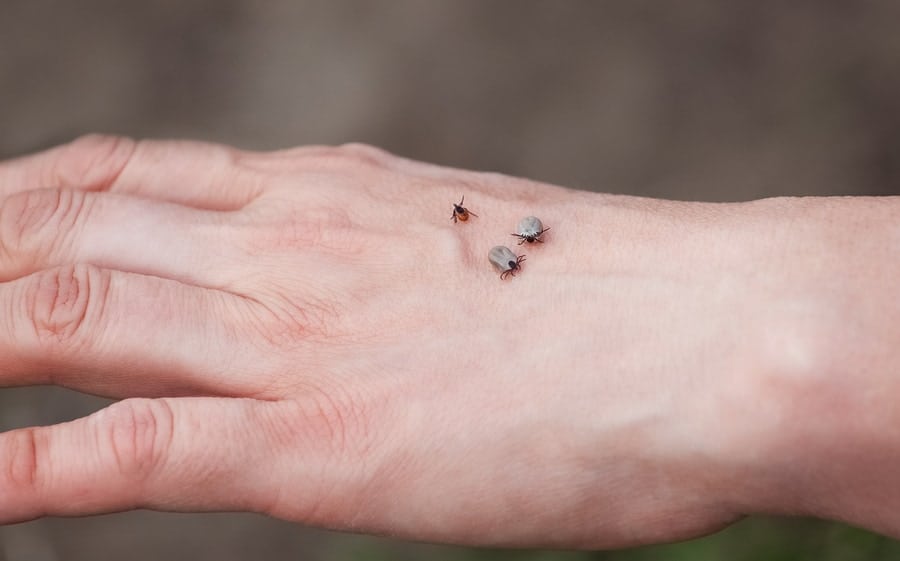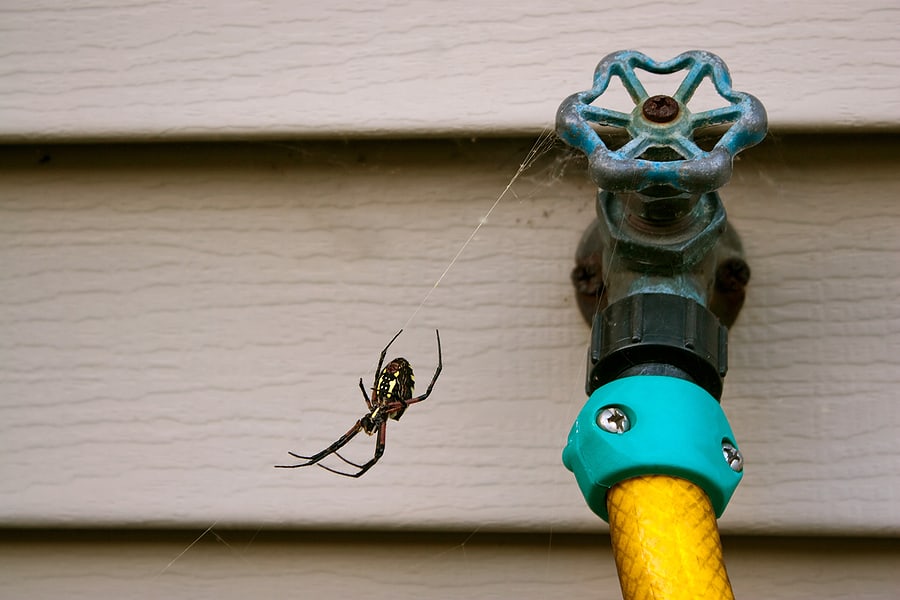READY TO GET STARTED?
REQUEST A FREE ESTIMATE
Fill out the form below or call (888) 466-7849 for a free, no-obligation estimate.

Spring is just around the corner and so are more pests! It’s the perfect time of year to begin prepping your home to keep spring pests away. Mosquitoes, termites, ants, and wildlife are common in the spring time, so it’s best to follow these tips to hopefully lessen your chances of a spring pest infestation.
Pests can fit through the tiniest of holes or cracks in your home. Be sure to examine your home for any potential openings in your foundation, windows, doors, and walls. You can use a silicone caulk to seal any discovered gaps.
Avoid leaving open food containers out in the open where it’s easy for pests to find. If possible, transfer open food containers to airtight containers that are plastic or glass. This will make it more difficult for some pests to chew through.
Mosquitoes and other spring pests utilize standing water to breed. It only takes the smallest amount of water to attract them to your home. Moisture is also an attractant for cockroaches, termites, and wildlife. Some ways to lessen moisture is to clean out bird baths and pet water bowls daily and check for any other objects, such as HVAC pans or old tires that can house an excess amount of water.
If you believe that your home has been taken over by any spring pests, be sure to reach out to your local Birmingham, Alabama pest control company to receive a plan of action today.

Spring season brings fresh air, warmer weather, and pests! Because of spring’s climate, household pests, including ants, roaches, mosquitoes, termites, rodents, and other pests start emerging from hibernation, looking for a food source and a place to nest. Before these pests emerge in droves, now is the perfect time to prevent them. Check out our tips on keeping unwanted spring pests away from your Tennessee home!
The smallest crack, crevice, or hole can let pests inside your home. Check around the exterior of your home, including your foundation, pipes, windows, doors, and HVAC units for these areas. Cockroaches, rodents, wasps, ants, and more will gain access and cause several problems in your home. If you notice any openings, seal them tightly with caulk. For doors, consider utilizing a sweep to seal the gap between the floor and the door. Utilize screens on doors and windows and make sure they’re always in good repair.
The combination of warmer weather and standing water will attract pests like mosquitoes and roaches to your property. Standing water is a major pest attractant and allows them to multiply and thrive, making it essential to remove it. Check your exterior and interior for leaks. Even dripping faucets and loose fixtures can attract pests. Check your yard for any items that could collect water and remove them, including flowerpots, old tires, tarps, toys, etc. Also, consider enclosing your crawlspace to help reduce moisture and control temperatures inside your home.
Many pests will utilize our firewood to hitchhike their way inside our homes. Place and store your woodpiles at least 20 feet away from your home. For extra protection, consider placing them in plastic containers with lids and elevate them off the ground to prevent termites and roaches from living in them. Before you bring it indoors, inspect it for pests and brush them off.
Starting early on your spring cleaning could pay off in keeping pests away! Consider starting at the lowest level of your home and working your way up to declutter. Clean the floors, dust, sweep, mop, vacuum, and remove unnecessary items from your closets and drawers. Get rid of old newspapers and cardboard boxes in storage, as these can attract rodents looking for a place to nest. In your yard, remove old tree stumps, twigs, and other debris. Likewise, rake up all the leaves and continue mowing on a regular basis.
Mice and rats are looking for food to survive, invading our kitchens to find it. It’s important to clean your kitchen and safely store leftover food. After each meal, wipe down your counters and clean up any leftover crumbs or spills. On a regular basis, sweep and mop your kitchen floors, and don’t forget to clean under your appliances too. Take your garbage out regularly, using trashcans with lids. When storing food, make sure you utilize airtight containers.
While utilizing these pest prevention tips will always help keep bugs from invading your home, sometimes it’s best to call a professional for extra protection. Your local pest control company can assess your home, identify any sources of pest problems, and provide you with a pest control and prevention plan.
Spring brings warm weather and the need for spring cleaning. When making your spring to-do list, make sure to include pest control with it. The warm weather brings pests out in droves, whether emerging from their overwintering spots or searching for a mate to reproduce with. One of the most common spring pests are termites. Spring marks the beginning of termite swarming season, when termites leave their colonies in search of a mate to form a new colony with. Don’t forget to make termite treatment a priority on your spring checklist!
Termites can go undetected for long periods of time, causing significant damage to your home. Once you identify the signs of termites, the next step is to determine the best termite treatment for your situation. Here are some of the most common termite treatment options:
Pretreatments are termite treatments carried out during the construction phase of new construction. It is also preferable to use pretreatments when building additions to an existing home. When used before the physical infrastructure of a home or addition is laid, pretreatments are more effective and cost-effective. Pretreatments typically consist of a combination of liquid termiticide (often containing borates), termite bait, lumber treatment, and in-soil barriers.
Barrier treatments create a physical barrier between termites and your home. A trench is dug around your home’s perimeter, and the soil that is removed is heavily treated with a termiticide. The treated soil is then refilled into the trench. In some cases, a physical wall made of rock, sand, mesh, and plastic is built inside the trench’s outer wall. This adds another layer of defense between your home and termites.
The most common termite treatments are liquid treatments. These treatments are effective for termite infestations in your home’s interior. Holes are strategically drilled in both the foundation and the wood in these treatments. The termites are then forced to emerge after termiticide is injected into the holes. Termites are then exterminated using termiticide spot treatments.
Bait stations containing termiticide-laced wood, paper, or cellulose are placed in the ground around your home. Termites are drawn to the bait and consume it. The termiticide is slow acting, allowing termites to return to the colony and spread the bait to others, effectively killing the colony. Bait stations can be used in places where surface treatments cannot be used, such as near foundation drains and areas covered by slabs or flooring. Bait stations are a long-term and effective treatment solution.
While it can be tempting to attempt termite control yourself, it is usually best left to the professionals. If you have a termite infestation, contact your local pest control company for a termite inspection to determine the best treatment options for your home.
How to Manage Your Lawn & Prevent Lawn Diseases

A household pest is any undesired animal that has a history of living, invading, causing damage to, eating food from, acting as a disease vector for, or causing any other harm to a human habitat. While most are considered a nuisance, household pests become dangerous when they pose a risk to health, property, or lifestyle.
While they can be common year-round, some are common in the spring months. Here are a few common spring pests you can find in your Georgia home:
Termite swarming season begins in the springtime. Swarming season is when young termites leave their current colony and go off to find mates and establish new colonies. If you begin to see swarmers, it might mean a colony is nearby.
Ticks are problematic to humans and pets because they spread diseases like Lyme disease and Rocky Mountain spotted fever. You might begin to see an increase of tick bites in the springtime. The mild winters in Georgia don’t help with keeping ticks away for long, so you should always be aware of ticks at any time of the year.
With heavy rainfall in the early spring, you can expect to see ants finding their way inside your home. They will begin to search for food and water, which your home has plenty of.
These pesky pests will find their way inside once the weather begins to warm up. They can spread many pathogens by picking them up on their feet when landing on different items.
If you’re ready to begin prevention of these spring pests, reach out to your local pest control company to receive a free quote and the best plan of action to keep pests away!

Although spiders are considered a year-round pest, they become more visible and active in the spring. Overwintering pests like spiders emerge as the weather warms up to lay eggs for the approaching season. Spiders are predators, preying on smaller insects for food. They are usually not a huge threat to humans with only a few venomous species in our area. In fact, they can be quite beneficial to have around your home, working as a form of natural pest control by eating other insects you may have around.
If the thought of sharing your home with spiders creeps you out, don’t fret! Here are some spider prevention tips you can use this spring to help keep these pests out.
Protecting Your Pets from Fleas and Ticks
What Happens During the Bee Relocation Process?